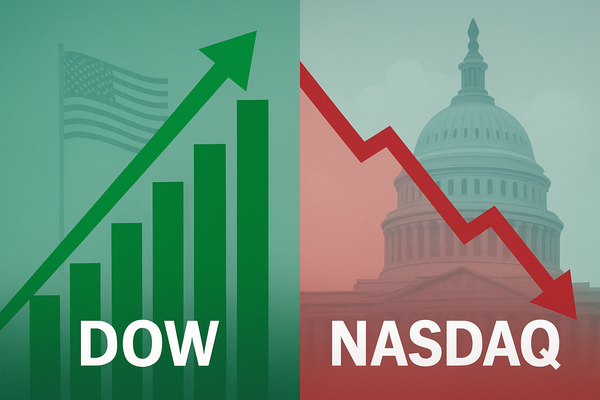APA Corporation Faces Short Seller Scrutiny: A Bellwether for the Energy Sector's Shifting Tides

Houston, TX – November 12, 2025 – APA Corporation (NASDAQ: APA), a prominent independent exploration and production company, found itself under an intensified spotlight in October 2025 as its short interest surged significantly. This notable increase, reaching 36.88 million shares sold short and representing 10.48% of its public float, signals a growing bearish sentiment among a segment of investors. The heightened skepticism surrounding APA, coupled with a broader, albeit marginal, uptick in short bets across the energy sector, immediately reinforced a negative market sentiment for the sector as a whole.
This surge in short interest in a major player like APA carries immediate implications, particularly for the energy sector and global commodity prices. It suggests that investors are bracing for challenging conditions ahead for energy companies, potentially driven by concerns over financial stability, oversupply, and softening demand. The S&P 500 Energy sector's 1.4% decline in October 2025, contrasting with the broader S&P 500's gain, underscores this bearish outlook, indicating that the increased scrutiny on APA may be a precursor to wider industry cautiousness and downward pressure on crude oil futures.
Unpacking the Surge: Details of APA's Short Interest Spike
The increase in short interest for APA Corporation (NASDAQ: APA) in October 2025 was a significant market event, highlighting a growing lack of confidence from short sellers. As of October 15, 2025, the volume of APA shares sold short climbed to an substantial 36.88 million, marking a 9.08% increase from the prior reporting period. This figure represented 10.48% of the company's public float, a considerable proportion that indicates a strong bearish conviction among these investors. The "days to cover" ratio, a metric indicating how many days it would take short sellers to repurchase all borrowed shares, stood at 5.1 days. This relatively high number suggests that a substantial amount of short-term selling pressure could persist, and any sudden positive news could lead to a short squeeze as these positions are covered.
This surge in short interest didn't occur in isolation; it coincided with a broader, though more modest, increase in short bets across the entire energy sector, which rose from 2.09% in September to 2.20% in October. This suggests that while APA was a specific target, the concerns might be systemic. Several factors appear to have contributed to this heightened skepticism. Despite reporting a respectable 3-year revenue growth of 9% and maintaining robust operating margins, APA's financial health indicators raised red flags. Its Altman Z-Score, a measure of corporate financial distress, was a concerning 1.49, placing the company squarely in the "distress zone." This score likely fueled fears of potential financial instability, making it an attractive target for short sellers looking to profit from a potential decline in share price. The company's third-quarter 2025 financial results were announced on November 5, 2025, which would have provided further data for investors to digest, potentially solidifying or challenging these bearish positions. Key stakeholders involved in this scenario include institutional investors and hedge funds that actively engage in short selling, as well as analysts whose reports on APA's financial health and future prospects would influence such investment decisions. Initial market reactions saw APA's stock price experience volatility, reflecting the battle between short sellers and long-term investors.
Winners and Losers in the Wake of APA's Short Squeeze
The increased short interest in APA Corporation (NASDAQ: APA) in October 2025 creates a ripple effect across the energy sector, potentially delineating clear winners and losers. Companies with robust balance sheets, diversified asset portfolios, and lower exposure to the specific financial concerns plaguing APA might emerge as relative winners. For instance, larger integrated oil companies like ExxonMobil (NYSE: XOM) or Chevron (NYSE: CVX), with their vast downstream operations and greater financial resilience, could be seen as safer havens. If the bearish sentiment towards APA is indeed a reflection of broader concerns about exploration and production (E&P) companies, investors might reallocate capital towards these more stable entities, benefiting their stock performance and market valuations. Furthermore, companies focusing on renewable energy or alternative energy sources, such as NextEra Energy (NYSE: NEE) or Brookfield Renewable Partners (NYSE: BEP), could indirectly benefit as investors reconsider the long-term viability and risk profiles of traditional fossil fuel companies. This shift in sentiment, even if gradual, could accelerate the flow of capital into sustainable energy solutions.
Conversely, direct competitors to APA, particularly other independent E&P companies with similar operational profiles, geographical focuses, or precarious financial health indicators, stand to lose. Smaller E&P firms with high debt loads, limited cash flow, or significant exposure to volatile commodity prices could face increased scrutiny and potentially see their own short interest rise. Companies like Occidental Petroleum (NYSE: OXY) or Pioneer Natural Resources (NYSE: PXD), while generally larger, could still experience negative sentiment if the market perceives their risk profiles to be similar to APA's, especially if they operate in the same basins or rely heavily on similar drilling technologies. Service providers to the E&P sector, such as Schlumberger (NYSE: SLB) or Halliburton (NYSE: HAL), could also face headwinds. A sustained bearish outlook on E&P companies, signaled by APA's short interest, could lead to reduced capital expenditure in exploration and drilling activities, directly impacting the demand for their services and potentially compressing their profit margins. This could force these service companies to adapt their strategies, perhaps by diversifying into other energy segments or focusing on cost efficiencies to maintain profitability in a challenging environment.
Wider Significance: A Barometer for Energy Market Sentiment
The surge in short interest for APA Corporation (NASDAQ: APA) in October 2025 transcends a mere company-specific event; it serves as a crucial barometer for the broader sentiment within the energy sector and highlights underlying anxieties about its future trajectory. This event fits into broader industry trends marked by increasing investor scrutiny on the financial health and sustainability of traditional oil and gas companies. Geopolitical factors, such as ongoing conflicts and shifting alliances, contribute to commodity price volatility, while the accelerating global energy transition towards renewables casts a long shadow over long-term demand for fossil fuels. The bearish bets on APA suggest that a segment of the market believes these macro trends will increasingly pressure E&P companies, making their future profitability uncertain.
The potential ripple effects on competitors and partners are significant. Other E&P companies, especially those with similar financial metrics or operational vulnerabilities, could see their stock prices come under pressure as investors apply the same critical lens. This could lead to a sector-wide re-evaluation of risk, potentially driving down valuations across the board for companies perceived as less resilient. Partners, including midstream companies that transport APA's products or refiners that process its crude, could face indirect impacts through reduced volumes or renegotiated contracts if APA's production or financial health deteriorates. Regulatory and policy implications are also noteworthy. Increased market skepticism about the financial stability of oil and gas producers could fuel calls for stricter environmental regulations, higher taxes on fossil fuel production, or even reduced access to capital markets for companies deemed to be high-risk. This could further accelerate the energy transition by making traditional energy projects less attractive to investors and policymakers. Historically, similar surges in short interest in specific companies have often preceded broader market corrections or significant shifts in industry dynamics. For instance, periods of high short interest in companies during the dot-com bubble or the subprime mortgage crisis often signaled underlying systemic issues that eventually impacted entire sectors. While not a direct comparison, the situation with APA could be a precursor to a more cautious investment environment for the traditional energy sector, particularly as the world grapples with climate change imperatives and the push for decarbonization intensifies.
Navigating the Future: What Comes Next for APA and the Energy Sector
The increased short interest in APA Corporation (NASDAQ: APA) in October 2025 ushers in a period of heightened uncertainty and potential strategic shifts for the company and the wider energy sector. In the short-term, APA will likely face continued downward pressure on its stock price as short sellers maintain or even increase their positions, betting on further declines. The company's management will be under intense pressure to articulate a clear strategy for addressing the financial concerns highlighted by its Altman Z-Score and to demonstrate resilience in a challenging commodity price environment. This could involve aggressive cost-cutting measures, divestment of non-core assets, or a re-evaluation of its capital expenditure plans to shore up its balance sheet and improve investor confidence. For the broader energy sector, the situation with APA could lead to a flight to quality, with investors favoring companies that exhibit stronger financial health, lower debt, and more diversified revenue streams.
Looking further ahead, the long-term possibilities suggest a more profound transformation within the energy landscape. APA, and indeed many other E&P companies, may need to consider significant strategic pivots. This could include accelerating investments in carbon capture technologies, exploring opportunities in renewable energy projects, or focusing on optimizing existing assets for maximum efficiency rather than pursuing aggressive new exploration. The market opportunities that may emerge are primarily for companies that can adapt quickly to these evolving dynamics, perhaps by specializing in niche areas like sustainable energy infrastructure or by offering innovative solutions for reducing the environmental footprint of existing operations. Challenges will undoubtedly include securing financing in a market increasingly wary of traditional fossil fuel investments, navigating evolving regulatory frameworks, and attracting talent to an industry undergoing significant change. Potential scenarios range from APA successfully turning around its fortunes through strategic restructuring and operational improvements, thereby proving the short sellers wrong, to a scenario where sustained bearish sentiment forces more drastic measures, including potential mergers, acquisitions, or even a significant contraction of its operations.
A Critical Juncture: Summing Up APA's Short Interest and the Market Ahead
The increased short interest in APA Corporation (NASDAQ: APA) in October 2025 serves as a potent reminder of the inherent volatility and evolving risks within the energy sector. The core takeaway is that a significant segment of the market perceives APA, and potentially similar E&P companies, as vulnerable to financial distress amidst a backdrop of fluctuating commodity prices and a global pivot towards sustainable energy. The "days to cover" ratio of 5.1 days indicates that the bearish pressure is unlikely to dissipate quickly, and investors will be closely monitoring APA's operational performance and financial disclosures.
Moving forward, the market will likely exhibit increased discernment, differentiating between energy companies based on their financial resilience, strategic adaptability, and commitment to long-term sustainability. The underperformance of the S&P 500 Energy sector in October, coinciding with APA's short interest surge, suggests that the market is already pricing in a more cautious outlook for traditional energy. What investors should watch for in the coming months are not only APA's subsequent financial results and strategic announcements but also broader trends in crude oil prices, global energy demand, and any significant policy shifts related to climate change and energy transition. The ability of APA and its peers to navigate these headwinds will be crucial in determining their long-term viability and the overall health of the energy market. This event underscores that the future of energy is not just about supply and demand, but also about financial fortitude, environmental responsibility, and strategic foresight.
This content is intended for informational purposes only and is not financial advice



